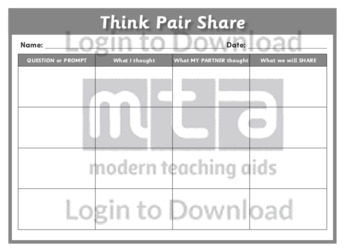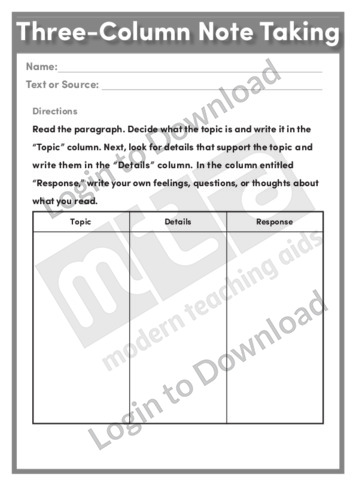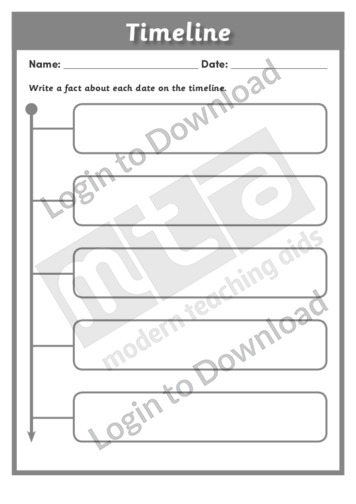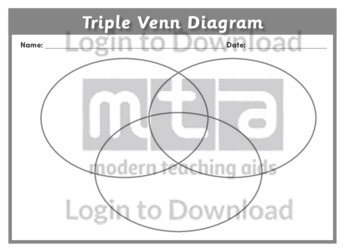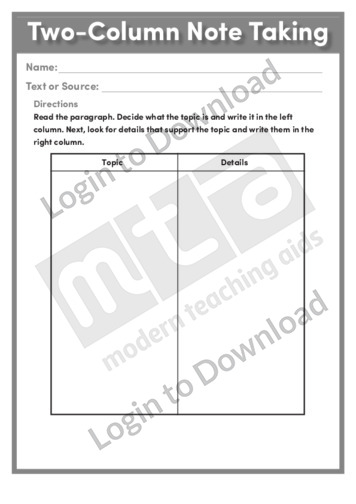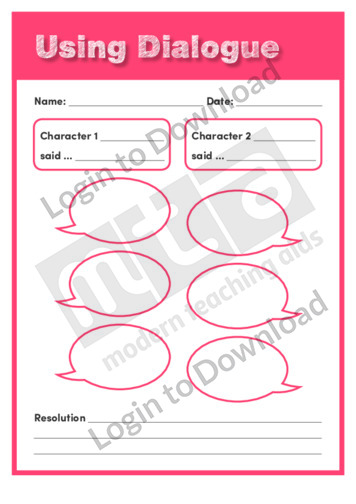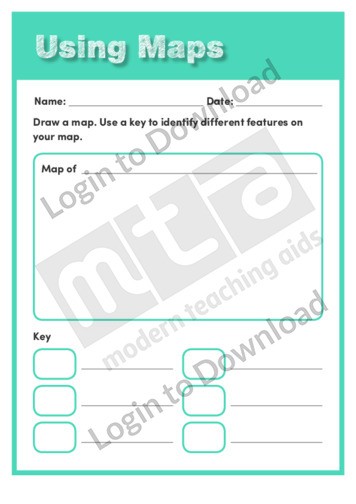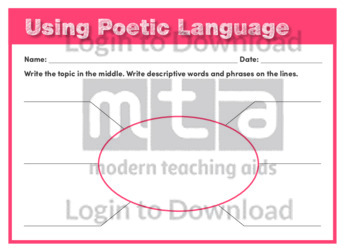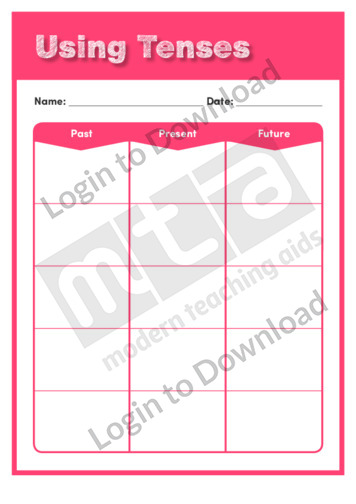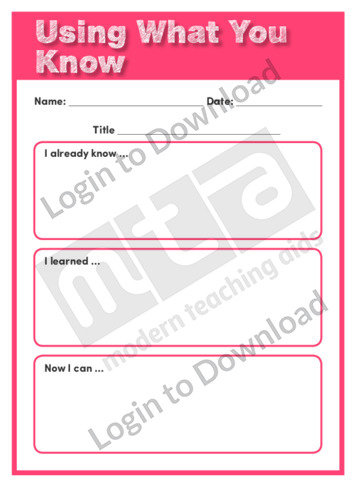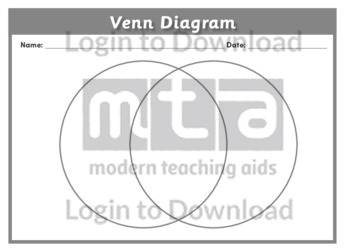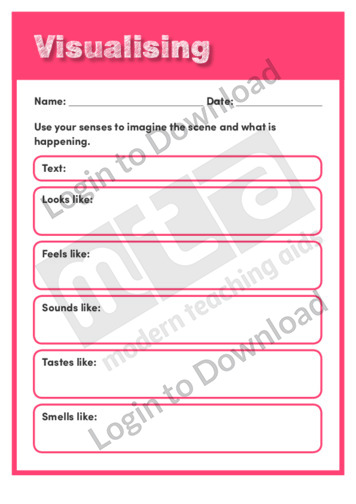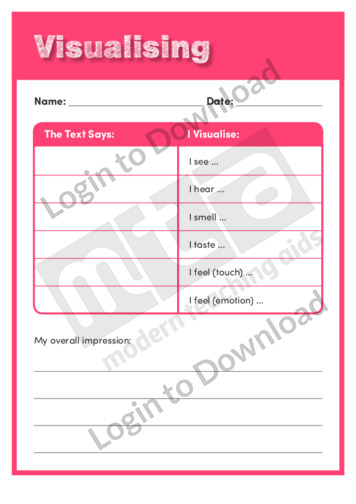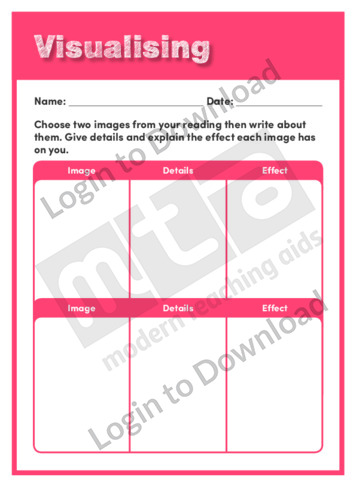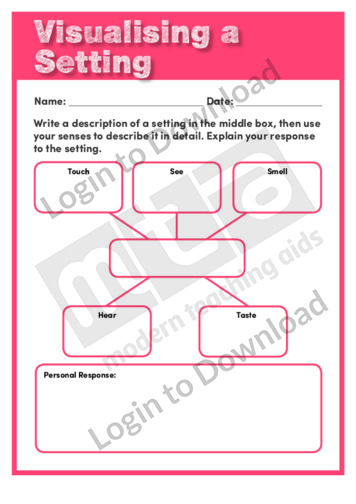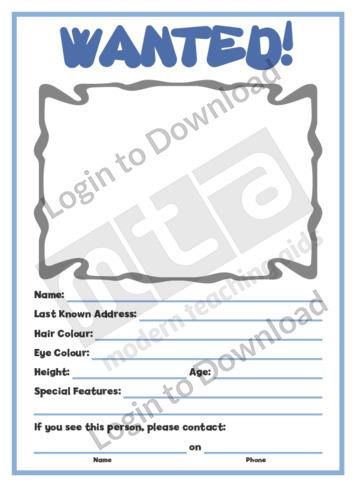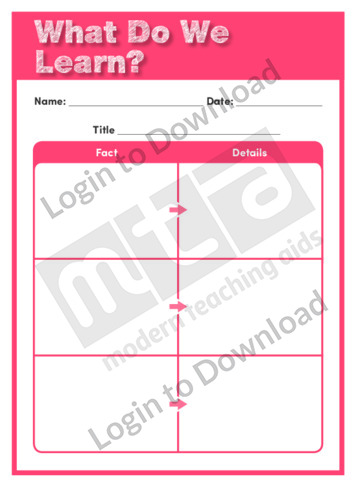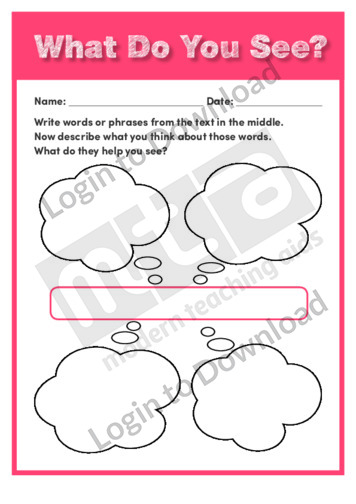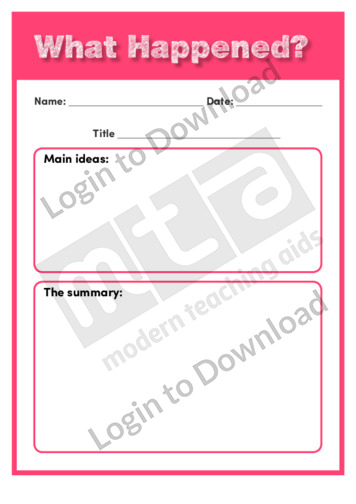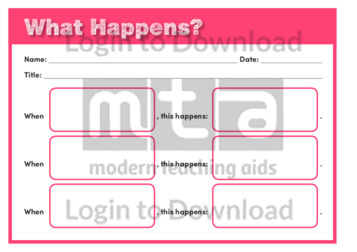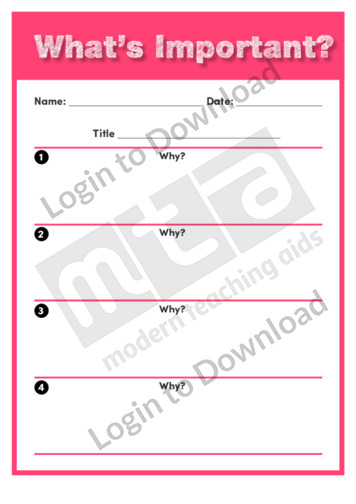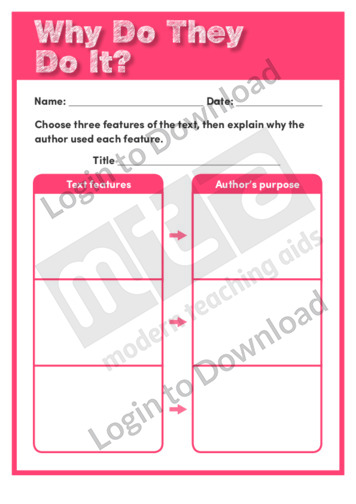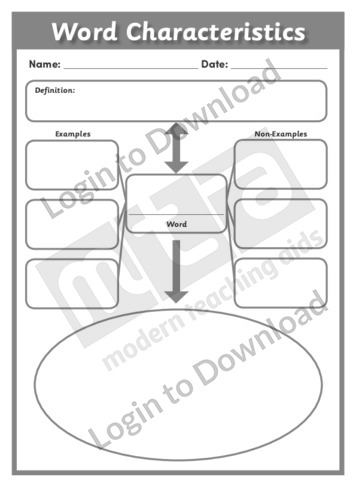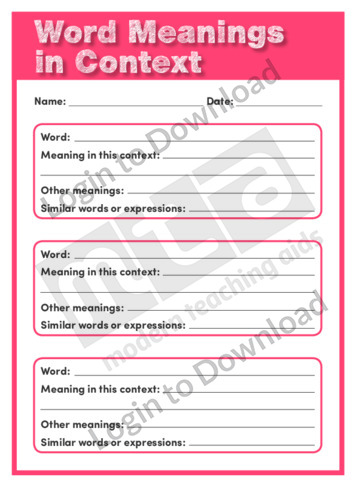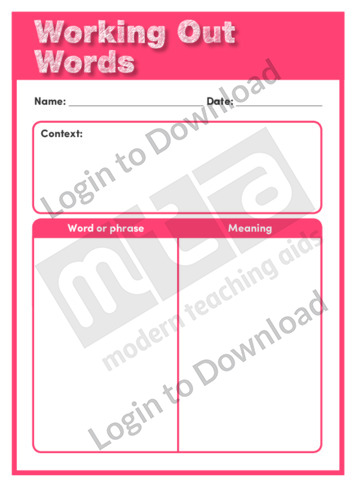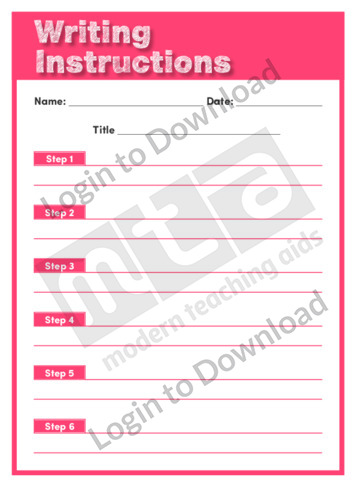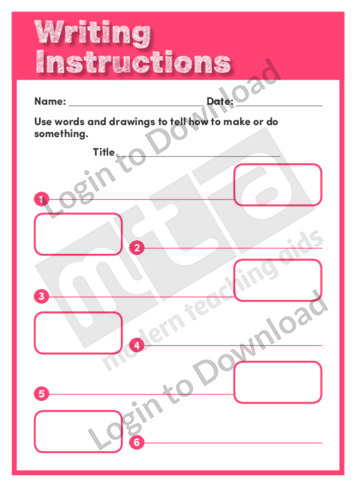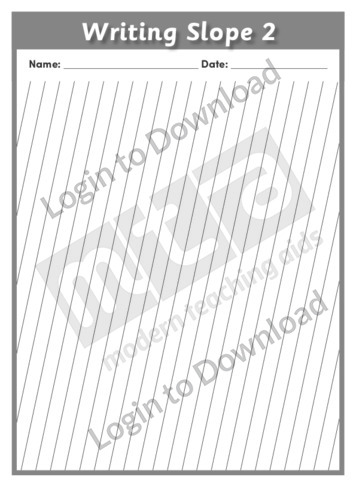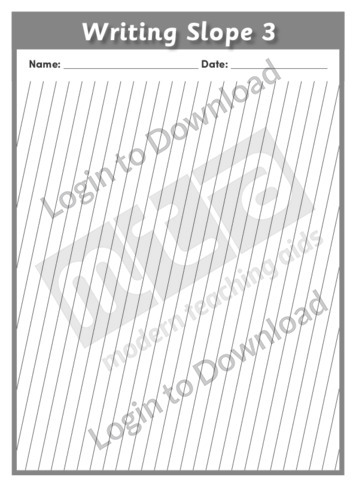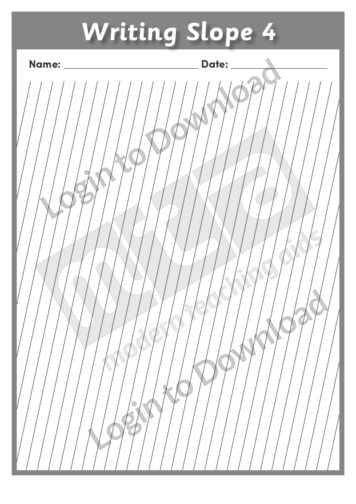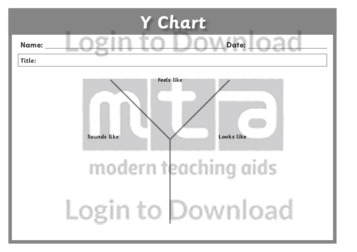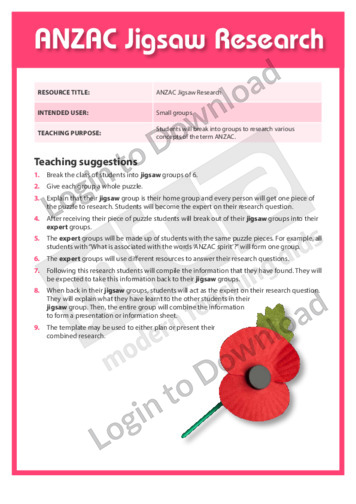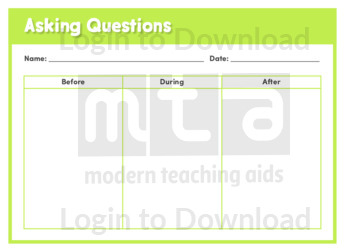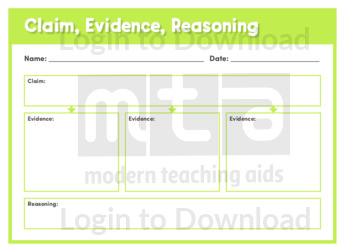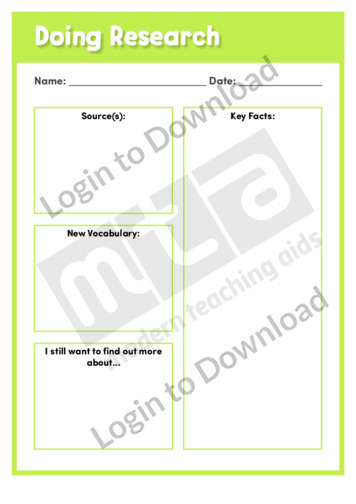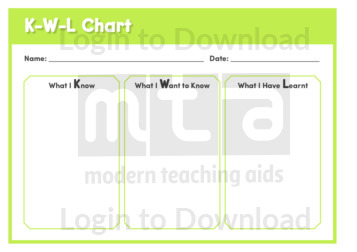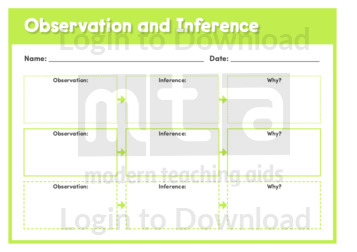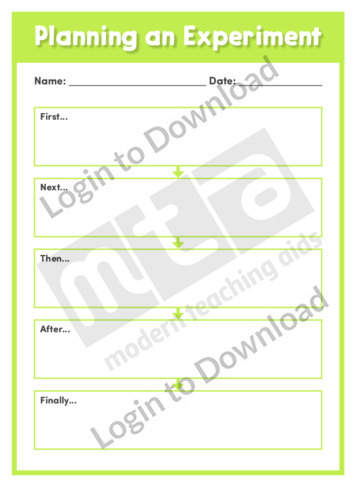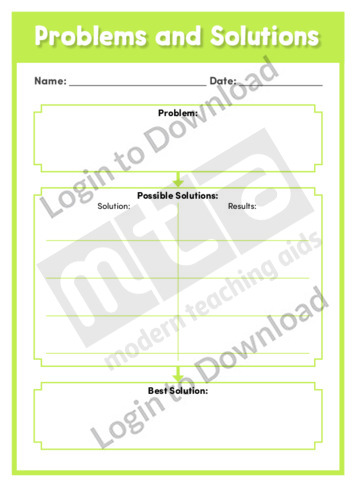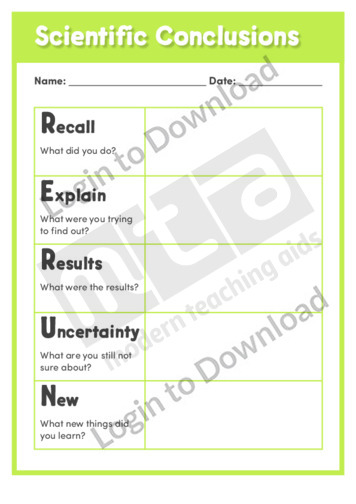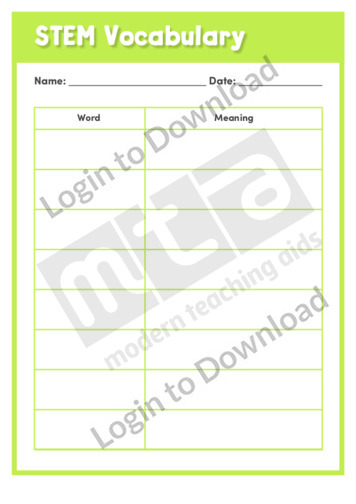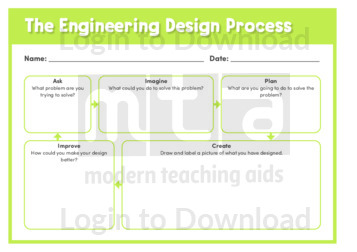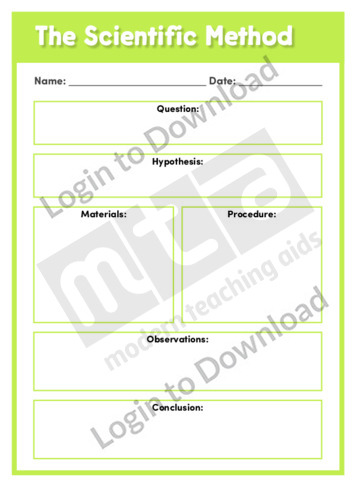This graphic organiser, ‘Think Pair Share’ is a fantastic resource to differentiate teaching instruction. It offers a less threatening environment that values individual input in class discussions. By outlining ideas in this table students can share their own thoughts, learn how to listen to others’ and then summarize both of their understandings in order to …More
This content area reading learning activity, ‘Three-Column Note Taking,’ helps students identify the main idea and supporting details in a text and write a response. It is aimed at enhancing students’ comprehension of the text by having them record important information in a graphic organiser.
This graphic organiser, ‘Timeline’ provides a vertical timeline with space for students to explore four key events. The timeline starts with a definite beginning however, includes and arrow at the end to demonstrate the continuum beyond the spaces provided. For example, this timeline can be used to plot and detail significant events of a student’s …More
This graphic organiser, ‘Tracking Dialogue’ supports the teaching of reading and writing by giving students a template for recording the way dialogue works as they read or plan for writing.
This graphic organiser, ‘Tracking Dialogue’ supports the teaching of reading and writing by giving students a template for recording the way dialogue works as they read or plan for writing.
This graphic organiser, ‘Triple Venn Diagram’ consists of three overlapping circles and is a great resource to help students visualise the relationship between three concepts. It can be used to compare and contrast differences and similarities in characteristics between ideas (for example, characters, countries, stories or shapes etc.). It can be used to compare and …More
This content area reading learning activity, ‘Two-Column Note Taking,’ helps students identify the main idea and supporting details in a text. It is aimed at enhancing students’ comprehension of the text by having them record important information in a graphic organiser.
This graphic organiser, ‘Using Dialogue’ supports the teaching of reading and writing by giving students a template for recording the way dialogue works as they read or plan for writing.
This graphic organiser, ‘Using Maps’ supports the teaching of writing and geographical skills by giving students a template for creating a map.
This graphic organiser, ‘Using Poetic Language’ supports the teaching of reading and writing by prompting students to record descriptive details as they read or write.
This graphic organiser, ‘Using Tenses’ supports the teaching of reading and writing by supporting students to understand changes in verb tenses.
This graphic organiser, ‘Using What You Know’ supports the teaching of comprehension and reading strategies by asking students to record what they already know and what they learn as they read.
This graphic organiser, ‘Venn Diagram’ consists of two overlapping circles and is a great resource to help students visualise the relationship between concepts. It can be used to compare and contrast differences and similarities in characteristics between ideas (for example, characters, countries, stories or shapes etc.). It can also be used across all learning areas …More
This graphic organiser, ‘Visualising’ supports the teaching of reading and writing by prompting students to use their senses to visualise as they read and write.
This graphic organiser, ‘Visualising’ supports the teaching of comprehension and reading strategies by asking students to use their senses to form mental images as they read.
This graphic organiser, ‘Visualising’ supports the teaching of comprehension and reading strategies by asking students to use examine images to determine their effect as they read.
This graphic organiser, ‘Visualising a Setting’ supports the teaching of reading and writing by asking students to use their senses to form mental images as they read and plan to write.
This ‘Wanted!’ poster provides teachers with a fun resource in which students can share and record important details about themselves and their physical features.
This graphic organiser, ‘What Do We Learn?’ supports the teaching of comprehension and reading strategies by asking students to identify facts and details as they read.
This graphic organiser, ‘What Do You See?’ supports the teaching of comprehension and reading strategies by asking students to form mental images as they read.
This graphic organiser, ‘What Happened?’ supports the teaching of comprehension and reading strategies by helping students to determine and summarise main ideas.
This graphic organiser, ‘What Happens?’ supports the teaching of reading and writing by helping students to determine or plan cause and effect relationships.
This graphic organiser, ‘What’s Important?’ supports the teaching of reading and writing by giving students a template for recording ideas and why they are important as they read or plan for writing.
This graphic organiser, ‘Why Do They Do It?’ supports the teaching of comprehension and reading strategies by prompting students to identify authors’ purposes as they read.
This graphic organiser, ‘Word Characteristics’ provides a graphical mind map that students can use to organise information and understand the meaning of new vocabulary. The resource prompts students to identify the new word, describe it using examples and non-examples and then create or find the definition. It can be used when exploring new topics and …More
This graphic organiser, ‘Word Meanings In Context’ supports the teaching of vocabulary and comprehension by giving students a template for identifying multiple meanings of words.
This graphic organiser, ‘Working Out Words’ supports the teaching of vocabulary and reading strategies by asking students to context and meanings of unfamiliar words as they read.
This graphic organiser, ‘Writing Connections’ prompts students to consider ways to make connections within sentences and paragraphs.
This graphic organiser, ‘Writing Instructions’ supports the teaching of writing by giving students a template for creating a set of instructions.
This graphic organiser, ‘Writing Instructions’ supports the teaching of writing and science experiments by giving students a template for recording the steps in a procedure.
This graphic organiser, ‘Writing Slope 1’ provides a slop card that can be placed underneath writing paper to guide the slope of letters. Neat handwriting is essential for legibility however, for some students it becomes difficult to keep a consistent slope when progressing towards using cursive writing. The lines on this slope card are wide …More
This graphic organiser, ‘Writing Slope 2’ provides a slop card that can be placed underneath writing paper to guide the slope of letters. Neat handwriting is essential for legibility however, for some students it becomes difficult to keep a consistent slope when progressing towards using cursive writing. The lines on this slope card are medium …More
This graphic organiser, ‘Writing Slope 3’ provides a slop card that can be placed underneath writing paper to guide the slope of letters. Neat handwriting is essential for legibility however, for some students it becomes difficult to keep a consistent slope when progressing towards using cursive writing. The lines on this slope card are narrow …More
This graphic organiser, ‘Writing Slope 4’ provides a slop card that can be placed underneath writing paper to guide the slope of letters. Neat handwriting is essential for legibility however, for some students it becomes difficult to keep a consistent slope when progressing towards using cursive writing. The lines on this slope card are narrow …More
This graphic organiser, ‘Y Chart’ prompts students to use higher-order thinking skills to analyse and organise the relative parts of information. The Y shape splits the diagram into three sections of feels like, sounds like and looks like to help students explore a concept in detail. This resource can be used across all learning areas …More
This ‘Asking Questions’ graphic organiser provides a template for students to organise their thoughts and questions about a topic at various stages of learning. This open-ended graphic organiser could be used to support students in formulating questions about a wide range of areas of scientific study, for example before, during and after an experiment or …More
This ‘Claim, Evidence, Reasoning’ graphic organiser provides a template for students to organise their ideas about a claim or assertion that has been put forward. The graphic organiser invites students to make a note of the claim, then provide three separate pieces of evidence to support the claim, before finally giving them an opportunity to …More
This ‘Doing Research’ graphic organiser provides a template for students to record and track their research. This graphic organiser is an ideal framework for students to note their sources of information, any new vocabulary they learnt in the course of their research, the new information they learnt and any further research they would like to …More
This ‘K-W-L Chart’ graphic organiser provides a template for students to explore what they know, what they want to know and what they have learnt about a given topic. The open-ended nature of this graphic organiser makes it suitable for supporting students in a wide range of scientific investigations and areas of study, as well …More
This ‘Observation and Inference’ graphic organiser provides a template for students to think critically and analytically about their observations. Students are prompted to record observations, then follow these up with inferences that they have made based on those observations. Finally, students are asked to explain why they have made those inferences. The ability to not …More
This ‘Observation Log’ graphic organiser is the perfect template for students carrying out any observation-based experiments or projects. The graphic organiser contains four clipboard-style spaces for students to record the date and their observation notes and can be photocopied to provide as many days’ worth of notes as is required.
This ‘Planning an Experiment’ graphic organiser provides a template for students to methodically plan an experiment from start to finish. The timeline format of this graphic organiser prompts students to consider the elements and actions required at each step of an experiment, supporting them in developing key investigation and experiment planning skills that are essential …More
This ‘Problems and Solutions’ graphic organiser provides a template for students to identify a range of possible solutions to a given problem, then establish the best solution from these options. The graphic organiser allows students to organise their ideas about solutions to a problem in a clear format, providing them with the opportunity to brainstorm …More
This ‘Scientific Conclusions’ graphic organiser provides a template for students to use the RERUN method to write a scientific conclusion. The letters of the acronym RERUN stand for ‘recall’, ‘explain’, ‘results’, ‘uncertainty’ and ‘new’, and students are provided with a short summary of each of these terms to support them in structuring their responses.
This ‘STEM Vocabulary’ graphic organiser provides a template for students to record new vocabulary that they come across in the course of their STEM learning experiences in a simple and familiar table format. Students can note any new vocabulary that they learn, then research to find a definition that they can record next to the …More
This ‘The Engineering Design Process’ graphic organiser provides a template for students to plan an experiment using the well-known engineering design process parameters. The engineering design process is a series of steps that engineers typically follow to come up with a solution to a problem, emphasising creative problem-solving, teamwork, resilience and design efficiency. Each text …More
This ‘The Scientific Method’ graphic organiser provides a template for students to use and understand this essential process of scientific enquiry and process. The graphic organiser prompts students to identify a problem by asking a question, then formulate a hypothesis based on this question. Students are then given the opportunity to plan an experiment, recording …More
It�s that easy!

